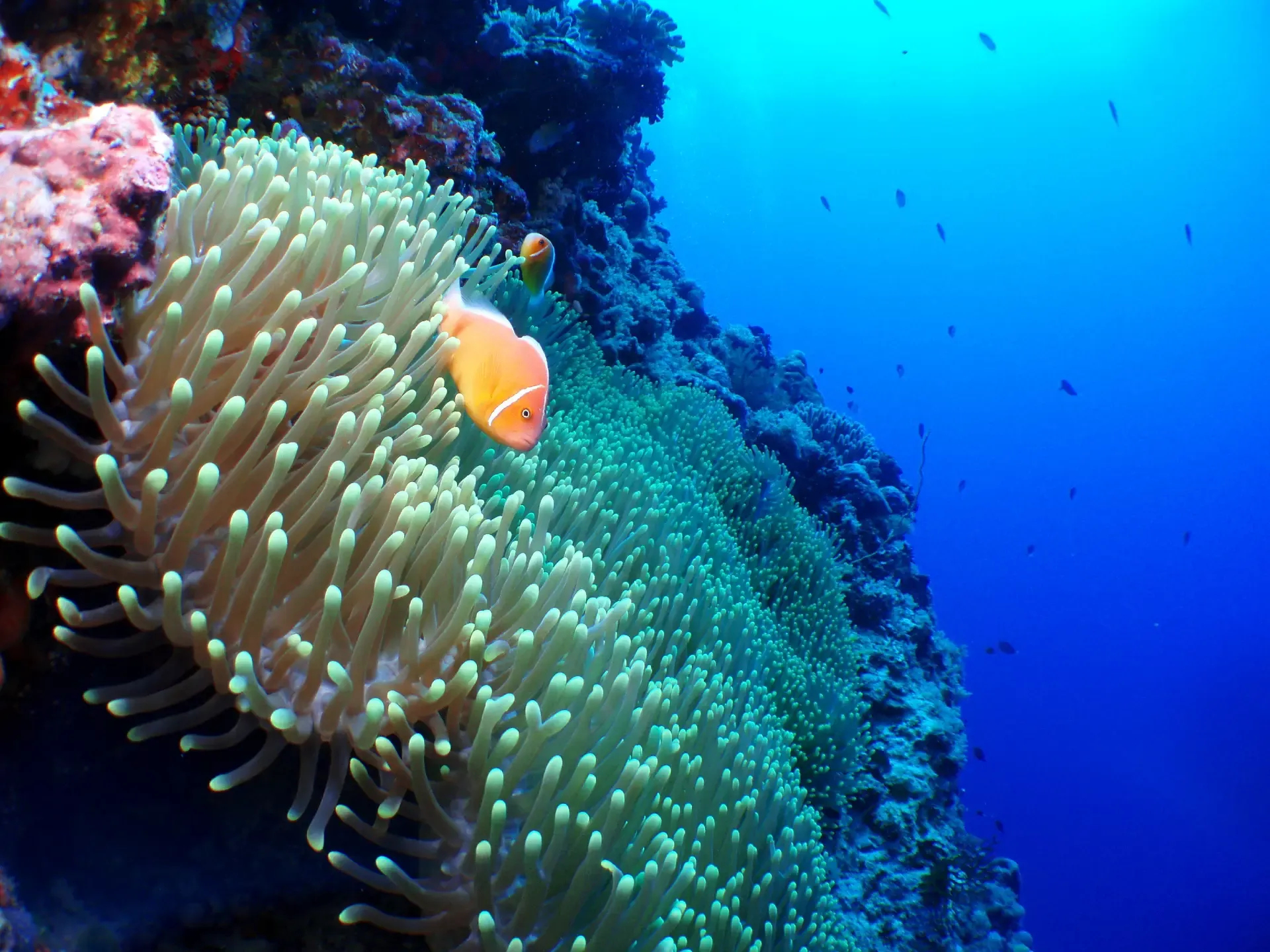Exploring Clownfish in the Philippines: A Dive into Vibrant Marine Life
The Philippines is a scuba diver’s paradise, renowned for its rich marine biodiversity and stunning coral reefs. Among the many captivating species that divers encounter,
the clownfish stands out with its vibrant colors and unique behaviors. This article delves into the fascinating world of three species of clownfish commonly found while diving in the Philippines: the Percula clownfish (Amphiprion percula), the Common clownfish (Amphiprion ocellaris), and the Tomato clownfish (Amphiprion frenatus). We’ll explore their characteristics, habitats, and behaviors, and provide insights into diving with these enchanting fish, with a special focus on Boracay and New Wave Divers.
The Percula Clownfish (Amphiprion percula)
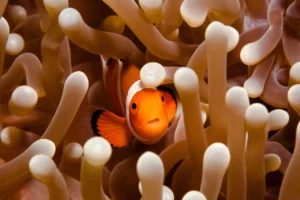 Characteristics
Characteristics
The Percula clownfish, often mistaken for the Common clownfish due to their similar appearance, is distinguished by its bright orange body adorned with three distinctive white bands outlined in black. These fish can grow up to 8 cm in length. Their vivid colors and charming patterns make them a favorite among divers and marine enthusiasts.
Habitat and Behavior
Percula clownfish are typically found in the shallow waters of coral reefs, often in depths of up to 15 meters. They inhabit sea anemones, forming a mutualistic relationship where they gain protection from predators while keeping the anemone clean by removing debris and parasites. The Percula clownfish is known for its territorial behavior, fiercely defending its anemone home.
The Common Clownfish (Amphiprion ocellaris)
Characteristics
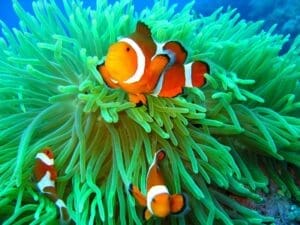 The Common clownfish, also known as the Ocellaris clownfish or False Percula clownfish, closely resembles the Percula clownfish. It sports a bright orange body with three white bands bordered by thinner black lines. However, the black lines around the white bands are less pronounced compared to the Percula clownfish. These fish can reach a length of about 11 cm.
The Common clownfish, also known as the Ocellaris clownfish or False Percula clownfish, closely resembles the Percula clownfish. It sports a bright orange body with three white bands bordered by thinner black lines. However, the black lines around the white bands are less pronounced compared to the Percula clownfish. These fish can reach a length of about 11 cm.
Habitat and Behavior
Like their Percula counterparts, Common clownfish thrive in coral reefs, often associating with anemones. They are highly social fish, living in groups dominated by a breeding pair. The dominant female is the largest, followed by the breeding male, with the remaining members being smaller non-breeding males. In the event of the female’s death, the breeding male will change sex to become the new female, a fascinating example of protandrous hermaphroditism.
The Tomato Clownfish (Amphiprion frenatus)
Characteristics
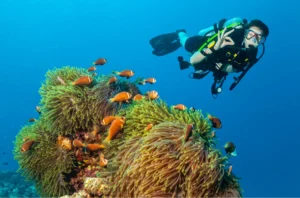 The Tomato clownfish is easily recognizable by its reddish-orange body, which becomes darker with age. A single white stripe runs vertically just behind the eyes, which is more prominent in juveniles. These fish can grow up to 14 cm in length, making them one of the larger clownfish species.
The Tomato clownfish is easily recognizable by its reddish-orange body, which becomes darker with age. A single white stripe runs vertically just behind the eyes, which is more prominent in juveniles. These fish can grow up to 14 cm in length, making them one of the larger clownfish species.
Habitat and Behavior
Tomato clownfish are found in shallow reef environments, often associating with bubble-tip anemones. They exhibit similar symbiotic relationships with their anemone hosts, gaining protection from predators while providing the anemone with nutrients from their waste. Tomato clownfish are known for their aggressive nature, particularly when defending their territory.
Diving with Clownfish in the Philippines
Boracay: A Diver’s Haven
Boracay, a small island in the central Philippines, is renowned for its pristine white beaches and crystal-clear waters. Beyond its picturesque shores lies an underwater world teeming with marine life, making it a popular destination for divers. The island offers a range of dive sites suitable for both beginners and experienced divers, with vibrant coral reefs and diverse marine species.
New Wave Divers: Your Gateway to Underwater Wonders
When diving in Boracay, New Wave Divers is the go-to dive shop. As a 5-star PADI Dive Center, New Wave Divers provides top-notch diving experiences, ensuring safety and enjoyment for all divers. With experienced instructors and a commitment to marine conservation, our dive shop offers guided dives that showcase the best of Boracay’s underwater treasures, including encounters with clownfish.
Popular Dive Sites for Clownfish Encounters
Crocodile Island
Crocodile Island, named for its crocodile-shaped rock formation, is a fantastic dive site for encountering clownfish. The shallow coral gardens teem with various species of clownfish, making it an ideal spot for observing these vibrant fish in their natural habitat. Divers can enjoy the sight of clownfish darting in and out of anemones, showcasing their characteristic behaviors.
Yapak
For more experienced divers, Yapak offers a thrilling dive with strong currents and deeper waters. This site is home to larger marine species, but divers can also spot clownfish nestled among the coral formations. The dramatic underwater landscape adds to the excitement, providing a dynamic environment for observing marine life.
Angol Point
Angol Point is a versatile dive site suitable for divers of all levels. The shallow reefs are rich with marine biodiversity, including numerous clownfish. The calm waters and clear visibility make it a great location for underwater photography, allowing divers to capture stunning images of clownfish and other marine species.
The Symbiotic Relationship: A Closer Look
The symbiotic relationship between clownfish and sea anemones is a fascinating aspect of marine biology. This mutualistic interaction benefits both species in several ways. Clownfish gain protection from predators by living among the anemone’s stinging tentacles, to which they are immune due to a special mucus on their skin. In return, clownfish help keep the anemone clean by removing debris and parasites, and their movements enhance water circulation around the anemone.
This relationship also extends to feeding. Clownfish attract prey to the anemone, which then captures and consumes it. The anemone’s waste provides nutrients for the clownfish, creating a balanced and mutually beneficial system.
Conservation and Sustainability
While clownfish populations are generally stable, they face threats from habitat destruction and the aquarium trade. Coral reef degradation due to climate change, pollution, and destructive fishing practices poses a significant risk to their natural habitats. Conservation efforts in the Philippines focus on protecting coral reefs and promoting sustainable practices to ensure the survival of clownfish and other marine species.
Diving operators play a crucial role in these efforts. By promoting eco-friendly diving practices and raising awareness about marine conservation, they contribute to the protection of the delicate marine ecosystems that clownfish and other species call home.
The clownfish are a captivating component of the Philippines’ rich marine biodiversity. Their intriguing behaviors, striking colors, and unique symbiotic relationships make them a favorite among divers and marine enthusiasts. Boracay, with its stunning dive sites and the expert guidance of New Wave Divers, offers an exceptional opportunity to observe these fascinating fish in their natural habitat.
Diving with clownfish in Boracay is not just about witnessing their beauty; it’s about understanding and appreciating the intricate relationships that sustain marine ecosystems. As divers explore the underwater world, they become ambassadors for marine conservation, helping to protect these vibrant ecosystems for future generations to enjoy. Whether you’re a seasoned diver or a novice eager to experience the wonders of the ocean, encountering clownfish in the Philippines is an unforgettable adventure.
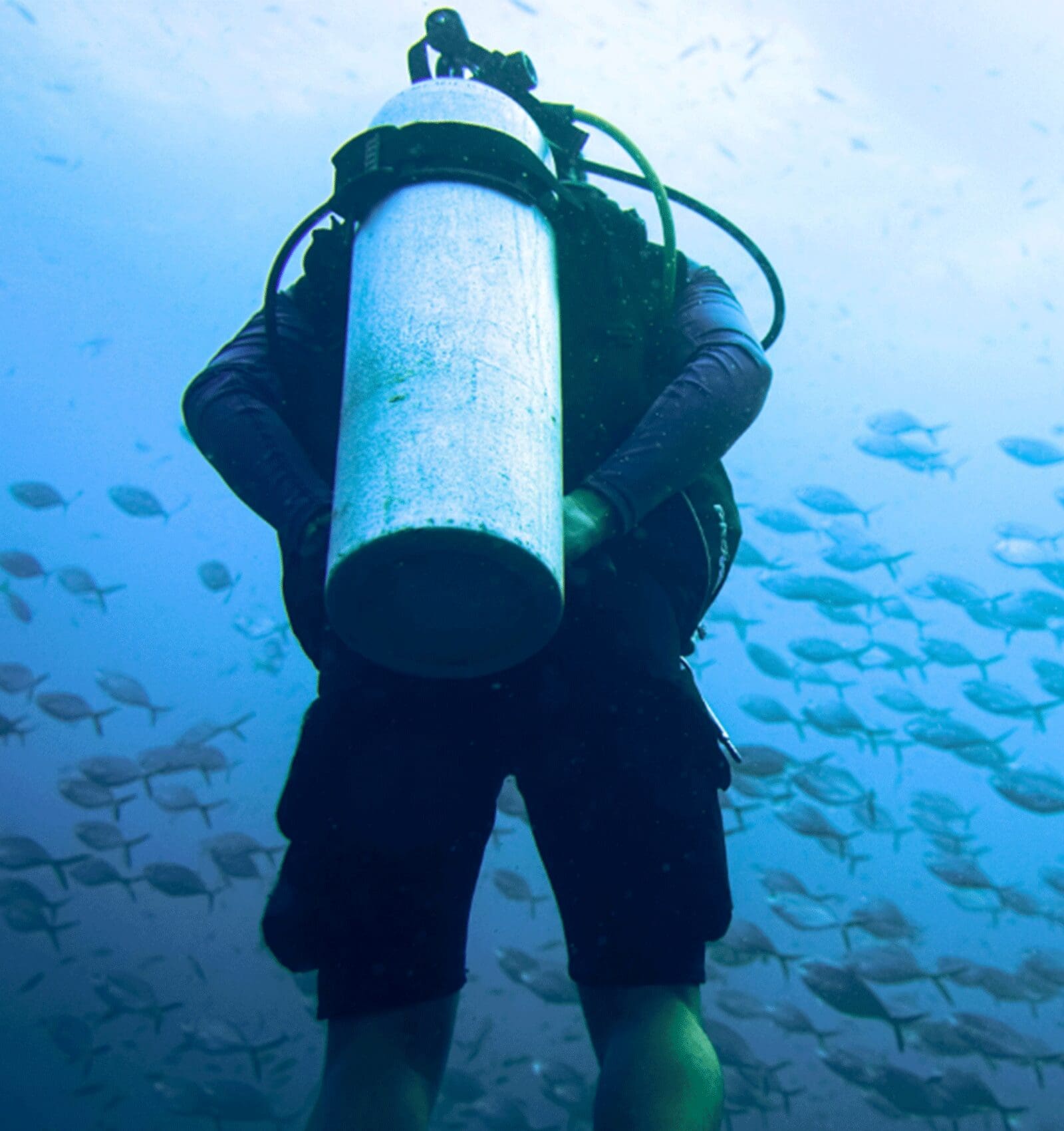
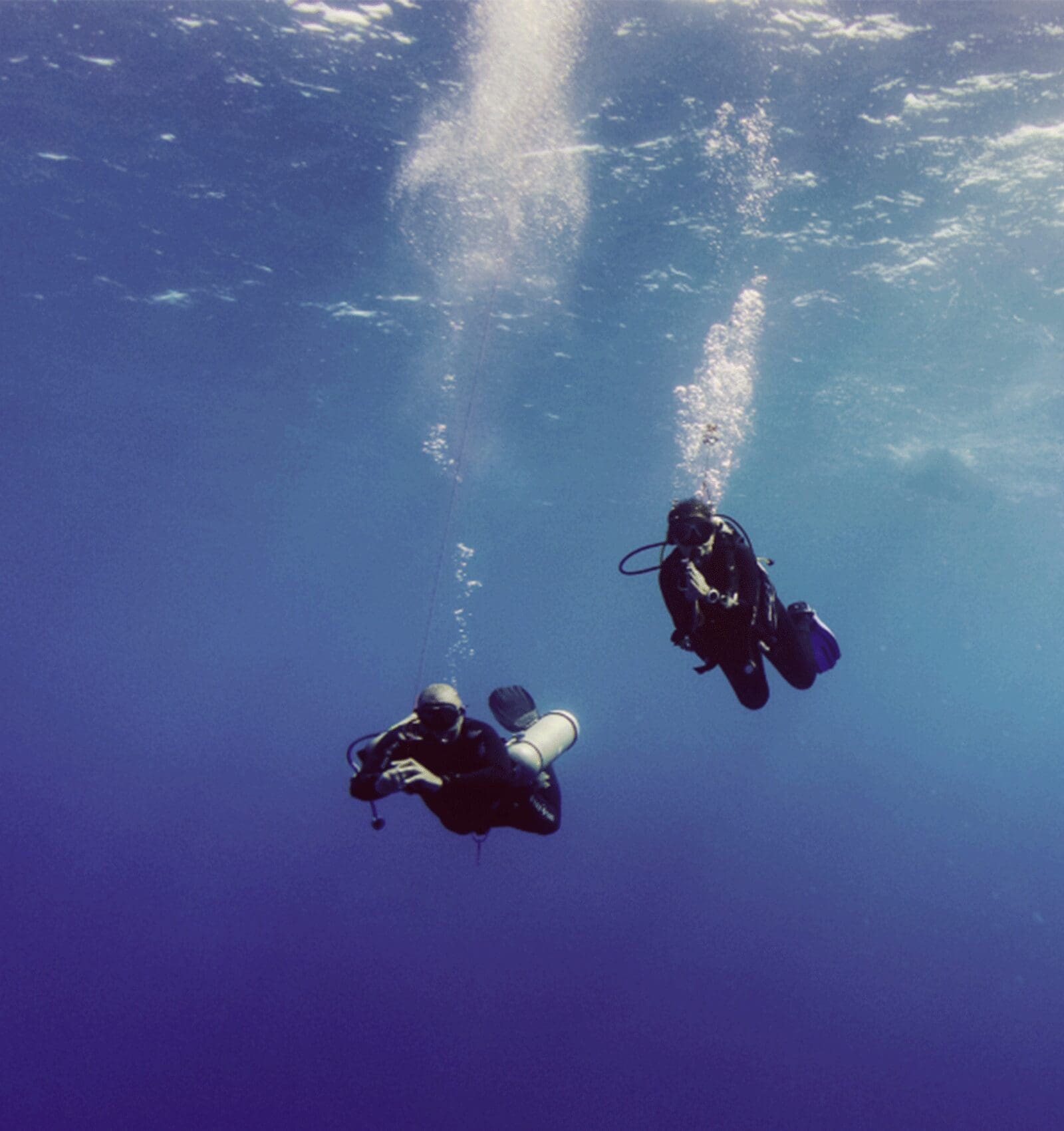
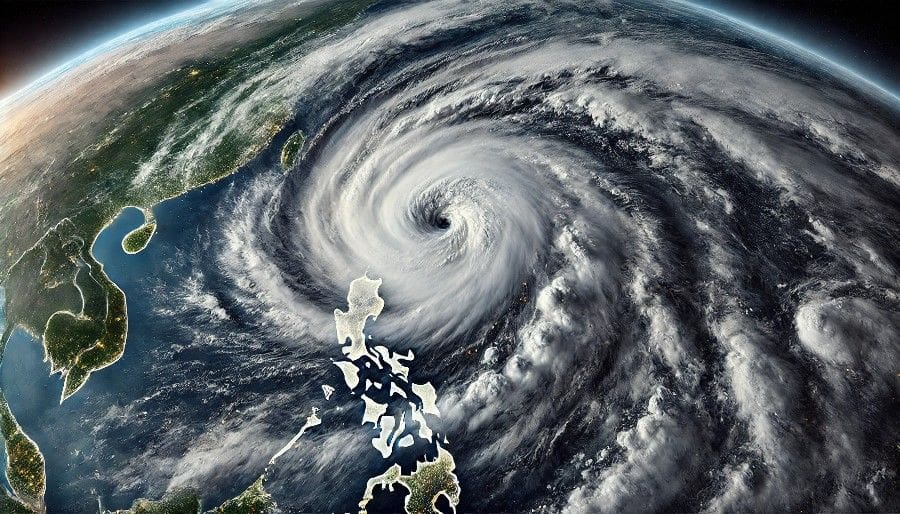

 Characteristics
Characteristics The Common clownfish, also known as the Ocellaris clownfish or False Percula clownfish, closely resembles the Percula clownfish. It sports a bright orange body with three white bands bordered by thinner black lines. However, the black lines around the white bands are less pronounced compared to the Percula clownfish. These fish can reach a length of about 11 cm.
The Common clownfish, also known as the Ocellaris clownfish or False Percula clownfish, closely resembles the Percula clownfish. It sports a bright orange body with three white bands bordered by thinner black lines. However, the black lines around the white bands are less pronounced compared to the Percula clownfish. These fish can reach a length of about 11 cm. The Tomato clownfish is easily recognizable by its reddish-orange body, which becomes darker with age. A single white stripe runs vertically just behind the eyes, which is more prominent in juveniles. These fish can grow up to 14 cm in length, making them one of the larger clownfish species.
The Tomato clownfish is easily recognizable by its reddish-orange body, which becomes darker with age. A single white stripe runs vertically just behind the eyes, which is more prominent in juveniles. These fish can grow up to 14 cm in length, making them one of the larger clownfish species.


